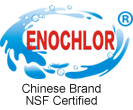04
2025
-
08
Newest SDIC Tablets: The Smart Choice for Eco-Friendly Solutions
Newest SDIC Tablets: The Smart Choice for Eco-Friendly Solutions Table of Contents 1. Introduction to SDIC Tablets 2. What Are SDIC Tablets? 3. Benefits of Using SDIC Tablets 4. Applications of SDIC Tablets in Various Industries 5. The Environmental Impact of SDIC Tablets 6. How to Use SDIC Tablets Effectively 7. Safety Measures When Using SDIC Tablets 8. Frequently Asked Questions (FAQs) 9. Conc
Newest SDIC Tablets: The Smart Choice for Eco-Friendly Solutions
Table of Contents
- 1. Introduction to SDIC Tablets
- 2. What Are SDIC Tablets?
- 3. Benefits of Using SDIC Tablets
- 4. Applications of SDIC Tablets in Various Industries
- 5. The Environmental Impact of SDIC Tablets
- 6. How to Use SDIC Tablets Effectively
- 7. Safety Measures When Using SDIC Tablets
- 8. Frequently Asked Questions (FAQs)
- 9. Conclusion
1. Introduction to SDIC Tablets
In today’s rapidly evolving world, the demand for sustainable and eco-friendly solutions is at an all-time high. Industries are actively seeking alternatives that not only meet regulatory standards but also protect our environment for future generations. Among these solutions are **Newest SDIC Tablets**, a remarkable product designed to enhance water quality and ensure sanitation while minimizing ecological footprint.
2. What Are SDIC Tablets?
**Sodium Dichloroisocyanurate (SDIC)** tablets are a form of chlorine compound widely used for disinfection and sanitation purposes. These tablets are particularly effective in treating water, making them essential in various industries, including agriculture, swimming pools, and municipal water treatment.
SDIC is recognized for its stability and effectiveness, offering a controlled release of chlorine, which aids in the elimination of harmful bacteria and viruses. This makes SDIC tablets a preferred choice for organizations aiming to maintain high hygiene standards.
3. Benefits of Using SDIC Tablets
The incorporation of SDIC tablets into water treatment processes presents several advantages:
3.1 Long Shelf Life
SDIC tablets boast an impressive shelf life, allowing them to be stored for extended periods without losing efficacy. This is crucial for industries that require large quantities of disinfectants but do not utilize them immediately.
3.2 Controlled Release of Chlorine
Unlike traditional chlorine products, SDIC tablets offer a controlled release mechanism. This means they dissolve gradually, providing a steady concentration of chlorine over time. This feature ensures effective disinfection without the risk of chlorine spikes.
3.3 Eco-Friendly Solution
As regulations around chemical use tighten, SDIC tablets provide a more environmentally friendly alternative. They break down into non-toxic byproducts, making them safer for aquatic life and ecosystems.
3.4 Versatile Applications
SDIC tablets can be used in various settings, including residential swimming pools, industrial applications, and agricultural practices. Their versatility allows different sectors to benefit from their disinfecting properties.
4. Applications of SDIC Tablets in Various Industries
4.1 Water Treatment
In municipal water treatment facilities, SDIC tablets ensure safe drinking water by effectively eliminating pathogens. Their ability to kill bacteria and viruses makes them essential in maintaining public health.
4.2 Swimming Pools
Pool operators frequently use SDIC tablets for routine water disinfection. By maintaining optimal chlorine levels, they ensure a safe swimming environment for patrons.
4.4 Agriculture
In the agriculture sector, SDIC tablets are used to disinfect irrigation water and equipment. This practice minimizes the risk of crop diseases, ensuring healthier yields.
4.5 Industrial Cleaning
Industries that require stringent sanitation protocols, such as food processing plants, employ SDIC tablets to disinfect surfaces and equipment. This reduces the likelihood of contamination and ensures compliance with health standards.
5. The Environmental Impact of SDIC Tablets
The environmental footprint of chemical products is increasingly scrutinized. SDIC tablets stand out for their **low environmental impact** when compared to traditional chlorine products. They decompose into harmless substances, reducing the risk of water pollution and harm to aquatic ecosystems.
Moreover, their efficient chlorine release minimizes the chances of chemical overdosing, which can lead to environmental toxicity. Thus, adopting SDIC tablets aligns with the global movement towards sustainable industrial practices.
6. How to Use SDIC Tablets Effectively
To maximize the benefits of SDIC tablets, it’s vital to follow proper usage guidelines:
6.1 Dosage Calculation
Determining the appropriate dosage is crucial. It typically depends on the volume of water being treated and the desired chlorine concentration. Standard recommendations suggest using around 1-3 tablets per 1000 liters of water, but this can vary based on specific conditions.
6.2 Dissolving the Tablets
For optimal results, dissolve SDIC tablets in a bucket of water before adding them to a larger body of water. This ensures even distribution and prevents localized high concentrations of chlorine.
6.3 Monitoring Water Quality
Regularly testing the water for chlorine levels is essential. Ideal free chlorine levels range from 1 to 3 ppm in drinking water and 3 to 5 ppm for swimming pools. Adjust the dosage accordingly based on these readings.
7. Safety Measures When Using SDIC Tablets
While SDIC tablets are safer than many alternatives, certain safety measures should be adhered to:
7.1 Personal Protective Equipment (PPE)
Always wear appropriate PPE, including gloves and goggles, when handling SDIC tablets. This minimizes the risk of skin irritation or eye damage.
7.2 Proper Storage
Store SDIC tablets in a cool, dry place, away from direct sunlight and incompatible substances. This prolongs their shelf life and maintains their efficacy.
7.3 Emergency Procedures
In case of accidental ingestion or exposure, follow emergency procedures outlined on the product label. Having emergency contact information readily available ensures prompt action if necessary.
8. Frequently Asked Questions (FAQs)
8.1 What are the main differences between SDIC tablets and traditional chlorine products?
SDIC tablets provide a controlled release of chlorine, improving efficacy and safety. They also have a longer shelf life and a lower environmental impact compared to traditional chlorine.
8.2 Can SDIC tablets be used in drinking water?
Yes, SDIC tablets are safe for treating drinking water when used according to recommended dosages and guidelines.
8.3 How do I know if my water is properly disinfected with SDIC tablets?
Regular testing for chlorine levels will indicate whether the water has been effectively disinfected. Aim for 1-3 ppm for drinking water and 3-5 ppm for swimming pools.
8.4 Are there any health risks associated with using SDIC tablets?
When used correctly, SDIC tablets are safe. However, improper handling or excessive concentrations can pose health risks, so following safety guidelines is crucial.
8.5 Where can I purchase SDIC tablets?
SDIC tablets are available at chemical supply stores, pool supply retailers, and online marketplaces specializing in water treatment products.
9. Conclusion
As industries move towards sustainable solutions, **Newest SDIC Tablets** emerge as a leading choice for effective disinfection and sanitation. Their numerous benefits, including eco-friendliness, long shelf life, and versatility make them ideal for various applications. By choosing SDIC tablets, industries not only ensure compliance with health standards but also contribute to environmental conservation.
Incorporating SDIC tablets into your operations is not just a smart choice; it's a commitment to a healthier planet and a safer future for all.
Previous
Previous
2023-04-23







